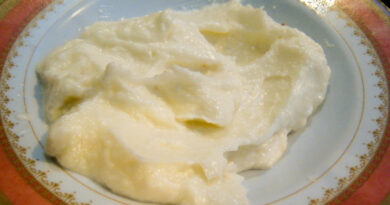Pastilla
Pastilla: A Culinary Treasure from Morocco
Introduction: In the labyrinthine alleyways of Moroccan souks, amidst the heady aromas of exotic spices and vibrant colors of artisan crafts, one culinary gem shines brightly: the pastilla. This delectable savory pie, with its delicate layers of flaky pastry encasing a rich filling of spiced meat, nuts, and fragrant herbs, epitomizes the essence of Moroccan cuisine. In this article, we embark on a gastronomic journey to uncover the origins, ingredients, preparation methods, and cultural significance of the esteemed pastilla.
Origins and History: The history of pastilla is as rich and layered as the dish itself. Originating in Morocco, pastilla (also spelled bastilla or b’stilla) is believed to have its roots in Andalusian cuisine, introduced to North Africa during the Moorish era. Over centuries, it evolved, incorporating indigenous ingredients and culinary techniques to become a cherished Moroccan specialty.
Initially reserved for special occasions and royal banquets, pastilla was a symbol of hospitality and culinary prowess. Its intricate preparation and lavish presentation made it a dish fit for kings, while its exotic flavors captivated the palates of both nobility and commoners alike.
Ingredients and Preparation: At the heart of pastilla lies a harmonious blend of savory and sweet flavors, achieved through a carefully curated selection of ingredients. Traditional pastilla typically features a filling of shredded poultry, most commonly chicken or pigeon, although variations with seafood or lamb are also popular.
The meat is cooked with an aromatic medley of spices, including cinnamon, saffron, ginger, and ground cloves, lending depth and complexity to the filling. Onions, garlic, and fresh herbs such as parsley and cilantro add freshness and balance to the dish.
One of the defining characteristics of pastilla is its unique pastry crust, which is akin to phyllo dough but with a distinct Moroccan twist. Thin sheets of dough are brushed with melted butter or clarified butter (samna), then layered to form a delicate shell that encases the savory filling.
In addition to the meat mixture, pastilla often includes a layer of almonds or other nuts, which provide textural contrast and a subtle nutty flavor. Some recipes also incorporate beaten eggs, which bind the filling together and add richness to the dish.
Once assembled, the pastilla is baked until the pastry is golden and crisp and the filling is cooked through. Before serving, it is traditionally dusted with powdered sugar and cinnamon, imparting a subtle sweetness that complements the savory elements of the dish.
Cultural Significance: Beyond its culinary appeal, pastilla holds profound cultural significance in Moroccan society. It is deeply ingrained in the country’s culinary heritage, representing a synthesis of diverse culinary influences and culinary traditions.
In Moroccan homes, pastilla is often prepared for festive occasions such as weddings, religious holidays, and family gatherings. Its preparation is a labor of love, requiring time, skill, and attention to detail, making it a dish that is cherished and revered by both cooks and diners.
Moreover, pastilla is emblematic of Moroccan hospitality, with hosts proudly serving it to guests as a gesture of warmth and generosity. Its intricate layers and complex flavors reflect the country’s rich cultural tapestry, inviting guests to savor the depth and diversity of Moroccan cuisine.
Variations and Adaptations: While traditional pastilla remains the epitome of Moroccan culinary excellence, modern chefs and home cooks have embraced innovation, creating new interpretations and variations of the classic dish. In recent years, vegetarian and vegan versions of pastilla have emerged, featuring inventive fillings such as spiced lentils, roasted vegetables, and dried fruits.
Additionally, pastilla-inspired dishes have found their way onto restaurant menus around the world, with chefs putting their own unique spin on the Moroccan classic. From gourmet interpretations featuring foie gras and truffles to playful reinventions incorporating unexpected ingredients like duck confit or seafood, pastilla continues to captivate and inspire culinary creativity.
Health Benefits: While pastilla may be indulgent, with its buttery pastry and rich filling, it also offers some surprising health benefits. The use of lean poultry, nuts, and fresh herbs provides a good source of protein, vitamins, and minerals. Moreover, the spices commonly used in pastilla, such as cinnamon and ginger, are known for their antioxidant and anti-inflammatory properties, contributing to overall health and well-being.
Conclusion: In conclusion, pastilla stands as a shining example of Moroccan culinary excellence, embodying the country’s rich cultural heritage and culinary traditions. From its humble origins in Andalusia to its elevated status as a beloved Moroccan delicacy, pastilla has captured the hearts and palates of food lovers around the world. Whether enjoyed as a festive centerpiece or a comforting family meal, pastilla continues to enchant and inspire, reminding us of the timeless allure of Moroccan cuisine.



